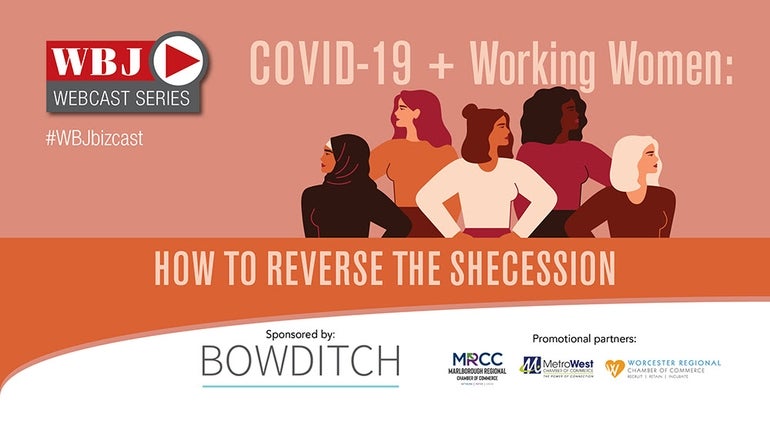Experts: Retaining women during and after the pandemic requires communication and empathy

It’s been widely documented that women were disproportionately impacted by the coronavirus pandemic compared to men, particularly in the realm of work -- and staying at work. Often the default caretakers in many families, many have withdrawn from the workforce to help take care of their households, or else found their schedules unexpectedly strained.
A group of women professionals, representing the legal, human resources and employee relations sectors in Central Massachusetts gathered at a WBJ webinar on Tuesday to discuss this particular challenge and how employers might better support their non-male workforce. Although the conversation varied, panelists generally agreed: the key to navigating what has been termed the Shecession is through communication, adjustment and empathy.
“Remember to be flexible,” said Kati O’Brien, vice president of HR corporate functions and total rewards at Framingham retailer Staples, Inc. “Remember to be thinking, for instance, even though maybe your kids are grown and in college, that three levels down from you, you have a single mom who's home with no childcare, trying to do their job on the computer.”
Time and time again during the one-hour panel, participants and moderator AiVi Nguyen, an attorney at Worcester law firm Bowditch & Dewey, returned empathy and openness as part of their discussions. Their points circulated around the idea a one-size-fits-all approach may not be the best vantage point from which to retain women workers, or even just generally adapt to instances of prolonged cultural emergency, like the pandemic.
“It’s just the listening that people need… Companies are not going to be able to give their employees everything they need to get through their personal issues, like the personal hurdles we have because of the pandemic, but creating a space where someone can say, 'This is what I need' … is better than not having it, even if you don’t have the solution,” Nguyen said.
Part of all this work, of adjusting to employee needs during the pandemic, and particularly the unique needs of women, means accepting the world will never again be like it was before the pandemic, said Desiree Murphy, senior labor and employee relations specialist at UMass Memorial Medical Center in Worcester.
“Part of the reckoning … is that recognizing that we can’t go back to that, we can’t go back to the glaring disparities that, again, this pandemic revealed,” Murphy said. “But we also can’t just brush over it and act like it didn’t exist.”
Shelley Costantino, vice president of field human resources at BJ’S Wholesale Club in Westborough, provided some examples of how her company attempted to tackle these challenges. Among the changes implemented were, she said, town halls, employee surveys, discouraging work emails outside of business hours, adjusting schedules and establishing virtual hallways to help employees connect with one another.
Those casual connections in the office, she said, were something BJ’s employees reported missing while they pivoted to remote work over the last year.
There will not be a uniform solution for every company in every sector, but consensus was clear: When it comes to retaining and supporting women in the workforce, the key is listening to what they need.









0 Comments